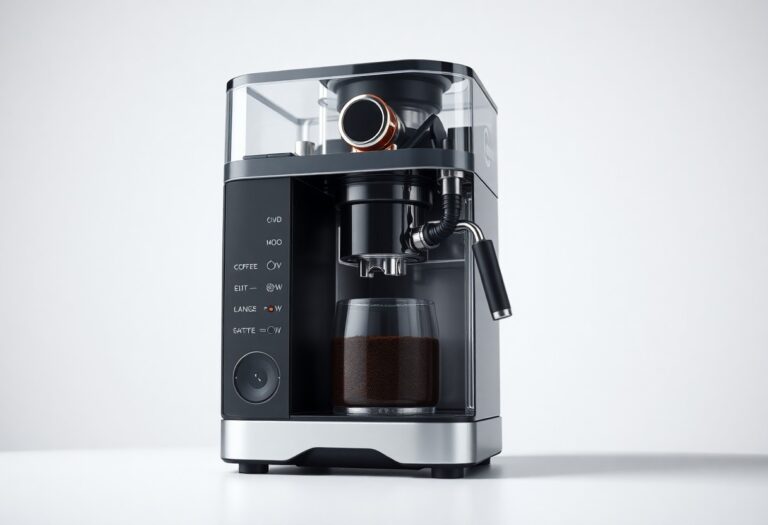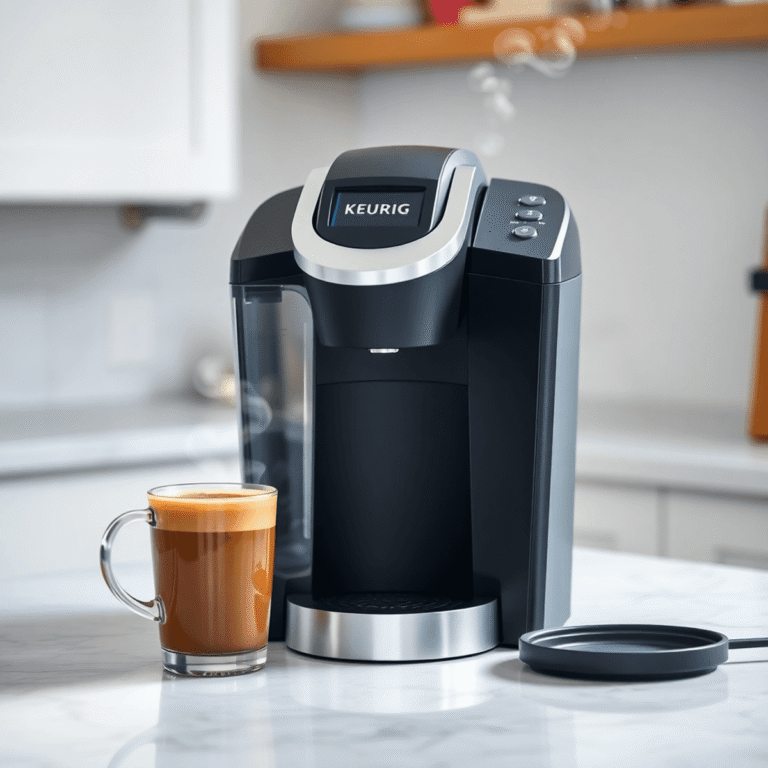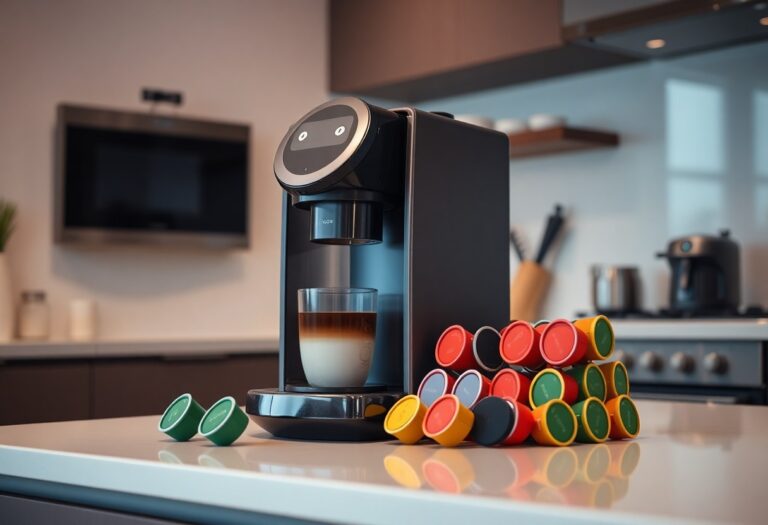How to Make Iced Coffee Without a Machine: Manual Methods
Making iced coffee without a machine has become increasingly popular through manual methods. As coffee enthusiasts seek ways to enjoy a refreshing cup without the need for specialized equipment, these manual techniques offer versatility and creativity in crafting the perfect iced brew. Embracing the art of handcrafted coffee, individuals can explore various methods that range from cold brew to Japanese-style iced coffee, Aeropress, French press, and even the unique Shakerato technique. By delving into these manual approaches, you can elevate your coffee experience at home while savoring the rich flavors and aromas in every chilled sip.
However, for those who still prefer using a machine for their coffee needs, it’s essential to know how to maintain it properly. For instance, if you’re using a K-Cup coffee machine, understanding how to clean a K-Cup coffee machine can significantly enhance its performance. Similarly, knowing how to clean a drip coffee machine is crucial for maintaining its longevity.
If you own a Hamilton Beach coffee machine, this operating guide will prove beneficial. Additionally, for those using Breville machines, understanding how to descale a Breville coffee machine is vital for optimal functioning.
Lastly, there’s a simple yet effective DIY method using vinegar that can help clean your coffee machine efficiently.
1. Cold Brew Coffee Method
Cold brew coffee is a popular manual method that involves steeping coarsely ground coffee beans in cold or room temperature water for an extended period. Unlike traditional hot brewing, this process takes around 12 to 15 hours, allowing the coffee to slowly extract flavors without heat.
Benefits of Cold Brew for Iced Coffee
- Produces a smooth and rich coffee concentrate.
- Less bitter and acidic compared to hot brewed coffee.
- Retains subtle flavor notes often lost during hot extraction.
- Versatile: can be served straight over ice or diluted with water, milk, or cream.
Steeping Time
Cold brew requires patience. Steeping for about 12 to 15 hours is ideal to achieve full flavor extraction. Shorter steeping leads to weak coffee; longer can result in over-extraction, though bitterness remains low due to the cold water.
Preparing and Storing Cold Brew
Follow these simple tips for best results:
- Use coarsely ground coffee beans. Fine grounds cause cloudy, muddy coffee and difficult filtration.
- Combine coffee grounds with cold water using a 1:4 to 1:8 ratio (coffee to water) depending on desired strength.
- Stir gently to saturate grounds evenly.
- Cover and refrigerate or leave at room temperature during steeping.
- Strain through a fine mesh sieve, cheesecloth, or a specialized cold brew filter.
- Store the concentrate in an airtight container in the fridge for up to one week.
Cold brew’s smooth profile suits those sensitive to acidity or bitterness in traditional iced coffee. Its ability to be made in large batches saves time during busy mornings while delivering consistently refreshing iced coffee throughout the week.
If you’re using a Keurig machine or a Cuisinart coffee machine, it’s important to know how to properly maintain them for optimal performance. Regular cleaning is essential, and you can use natural methods such as cleaning your coffee machine with vinegar. For more general maintenance tips, refer to this guide on essential maintenance tips for cleaning a coffee machine.
2. Flash Brewing (Japanese-style Iced Coffee)
Flash brewing is a manual iced coffee technique that captures bright flavors and aromas by brewing hot coffee directly over ice. Unlike cold brew, which relies on long steeping times and produces a smooth, mellow profile, flash brewing preserves the acidity and vibrant notes typical of hot-brewed coffee but delivers it chilled and refreshing.
How flash brewing differs from traditional methods:
- Traditional hot brewing usually involves pouring hot water over grounds with no immediate cooling, resulting in a warm cup.
- Flash brewing replaces part of the brewing water with ice, rapidly cooling the coffee as it drips through the grounds.
- This method prevents dilution and flavor loss caused by melting ice added after brewing hot coffee.
- The result is a crisp, lively iced coffee that highlights fruity, floral, and complex tasting notes.
Step-by-step guide to making Japanese-style iced coffee:
- Prepare your equipment: Use a pour-over dripper such as a Hario V60 or Chemex placed over a glass or carafe filled with ice cubes (about 40% of total water volume).
- Grind your coffee: Medium grind size works best for balanced extraction.
- Add coffee grounds: Use about 1 gram of coffee per 15 grams of total water (including ice).
- Start pouring: Pour hot water (just off boil) slowly in stages over the grounds. The initial pour melts some ice but quickly chills the brew as it drips through.
- Complete the brew: Continue pouring until you reach your desired amount of brewed coffee.
- Serve immediately: The brewed coffee will be perfectly chilled without needing additional ice.
This technique is favored by those who want an iced coffee that retains the lively complexity of freshly brewed hot coffee but served cold right away. It works well with single-origin beans to highlight unique flavor profiles that might be muted in other iced methods.
For those who prefer using machines like Keurig, Cuisinart, or Ninja for their coffee needs, understanding how much coffee to put in a machine can significantly enhance the brewing experience. For instance, knowing the perfect ratios for different machines can help achieve optimal flavor extraction. Additionally, regular maintenance such as cleaning and descaling (Cuisinart) can ensure these machines perform at their best for every brew.
3. Aeropress Method
The Aeropress method offers a versatile and efficient way to make iced coffee without a machine. Here are the key points to consider:
Detailed Instructions
- Start by placing a metal filter in the Aeropress and wetting it to prevent any papery taste in your coffee.
- Add finely ground coffee into the Aeropress chamber, adjusting the amount based on your preferred strength.
- Pour hot water (just off the boil) into the chamber and stir gently for about 10 seconds.
- After a brewing time of around 1 minute, press the coffee through into a glass filled with ice cubes.
- Stir the mixture to ensure even cooling and enjoy your refreshing iced coffee.
Adjusting Strength with Grind Size
- Experiment with different grind sizes to modify the strength and flavor profile of your coffee.
- Finer grinds can result in a more intense brew, while coarser grinds may produce a milder flavor.
Pros and Cons
- Pros:
- Quick brewing process, ideal for those needing a caffeine fix in a hurry.
- Easy cleanup due to the simple design of the Aeropress.
- Allows for precise control over variables like water temperature and brew time.
- Cons:
- Limited capacity per brew, making it less suitable for preparing large quantities of iced coffee at once.
- Requires manual effort to press the coffee, which may not be suitable for individuals with mobility issues.
While the Aeropress method is convenient for making personalized iced coffee, there are various other machines like Nespresso, Ninja, or Black and Decker that can also be used to prepare cold brew. These machines come with their own unique features and benefits. For instance, if you own a Black & Decker or Mr Coffee machine, you might find these cleaning guides helpful. Similarly, if you’re looking for maintenance tips for your Mr Coffee machine, this maintenance guide could be useful.
4. French Press Method
The French press iced coffee offers a unique brewing experience that sets it apart from other manual methods. Here are some key points to consider when using a French press for your cold coffee preparation:
1. Contrasting the French Press Method
Unlike the Aeropress method that produces a concentrated hot brew to be diluted with ice, the French press allows for a full immersion brewing process directly over ice. This results in a smoother and less acidic flavor profile ideal for iced coffee.
2. Coarser Grounds and Steeping Time
Utilize a coarser grind size when preparing coffee for the French press to avoid over-extraction. The recommended steeping time is around 4 minutes before plunging the grounds. This method extracts flavors differently compared to other techniques, enhancing the overall taste of the final brew.
3. Tips for Achieving Optimal Flavor
To enhance the flavor of your French press iced coffee, consider experimenting with different coffee beans and roast levels to find your preferred taste profile. Additionally, controlling the water temperature and brew time can significantly impact the final result.
4. Serving Suggestions for French Press Iced Coffee
Once your French press iced coffee is ready, consider serving it over ice in a tall glass garnished with fresh mint leaves or a slice of citrus for an added touch of freshness. You can also sweeten it with flavored syrups or milk alternatives according to your preferences.
By mastering the French press method for making iced coffee, you can enjoy a rich and flavorful cold brew that highlights the nuanced flavors of your favorite coffee beans. For further insights into manual brewing methods, feel free to explore our comprehensive guide.
5. Shakerato (Espresso Shaken with Ice) Method
The Shakerato (Espresso Shaken with Ice) Method stands out for its energetic preparation style and bold flavor profile. Unlike steeping or brewing over ice, this method relies on shaking a shot of espresso vigorously with ice cubes in a cocktail shaker. The result is a frothy, intensely chilled coffee drink with a silky texture and vibrant aroma.
Unique Features
- Cold dilution through shaking chills the espresso rapidly while slightly diluting it, balancing the boldness.
- The vigorous shaking creates a light foam layer on top, adding an appealing mouthfeel.
- It’s quick to prepare, making it ideal for when you want iced coffee immediately.
Equipment Needed
- Espresso shot (prepared using an espresso machine, stovetop moka pot, or Aeropress adapted for espresso-style coffee)
- Cocktail shaker (or any sealable jar or container that can be shaken)
- Strainer (if your shaker doesn’t have one built-in)
- Fresh ice cubes
- Glass for serving
Step-by-Step Instructions
- Pull a fresh espresso shot (~30 ml). Ensure your coffee machine is clean for the best results by following these step-by-step instructions.
- Add the espresso to the cocktail shaker along with a handful of ice cubes.
- Seal the shaker tightly.
- Shake vigorously for about 15 to 20 seconds until well chilled and frothy.
- Strain the mixture into a glass filled with fresh ice cubes.
Variations and Customizations
- Sweeten before shaking by adding simple syrup, honey, or flavored syrups like vanilla or hazelnut.
- Add a splash of milk or cream after shaking for a creamy texture.
- Use flavored bitters or spices such as cinnamon for an aromatic twist.
- For a stronger kick, double the espresso shot or reduce shaking time to limit dilution.
The Shakerato method delivers an experience closer to an espresso cocktail than traditional iced coffee, appealing to those who prefer bold flavors with an elegant presentation.
Conclusion
Making homemade iced coffee without a machine opens up a world of possibilities. Each manual method — from cold brew’s smooth steep to the vibrant clarity of flash brewing, from the versatility of Aeropress to the robust richness of French press, and the lively shake of a Shakerato — offers unique flavors and experiences.
You can:
- Adjust grind size and steeping times to find your perfect balance
- Experiment with ratios, water temperatures, and ice quantities
- Customize with milk, syrups, or spices for personalized twists
Mastering how to make iced coffee without a machine: manual methods is about creativity as much as technique. It encourages you to explore what works best for your taste and schedule. Embrace the process, try different approaches, and enjoy crafting refreshing iced coffee exactly how you like it — no expensive equipment required. Your next great cup could start anywhere: in your kitchen, with simple tools and your own hands.







